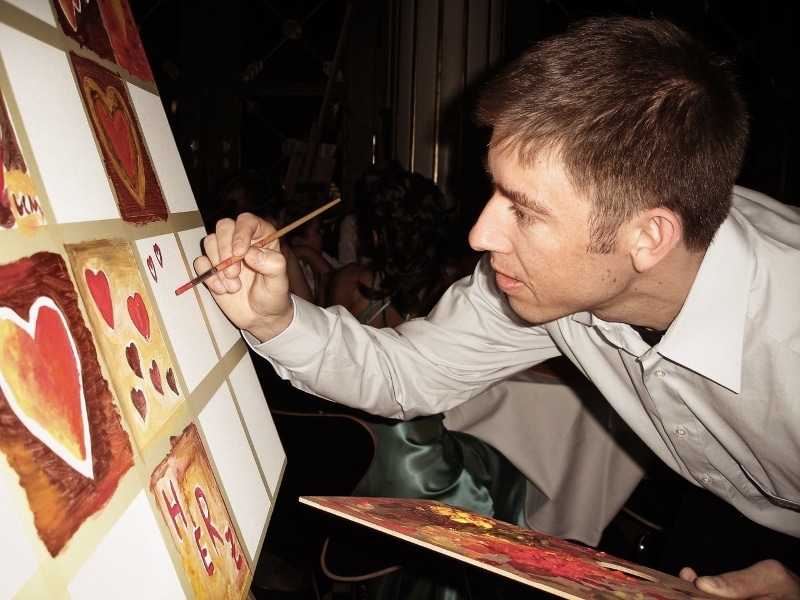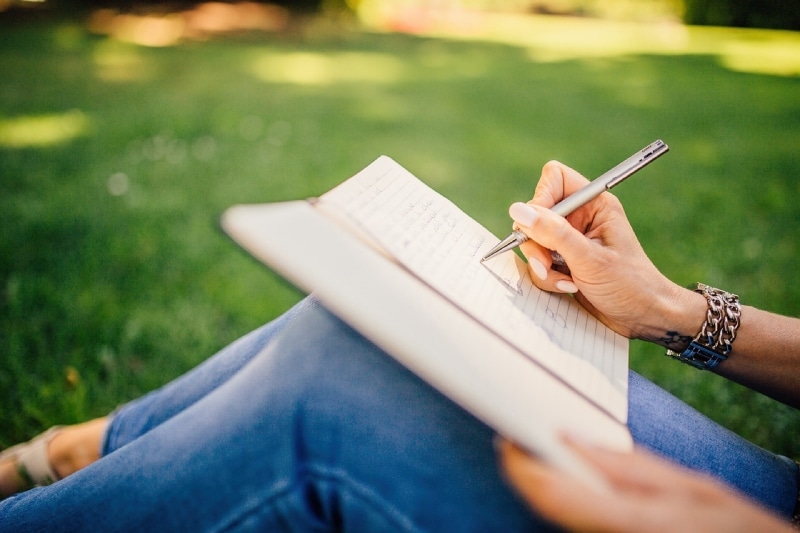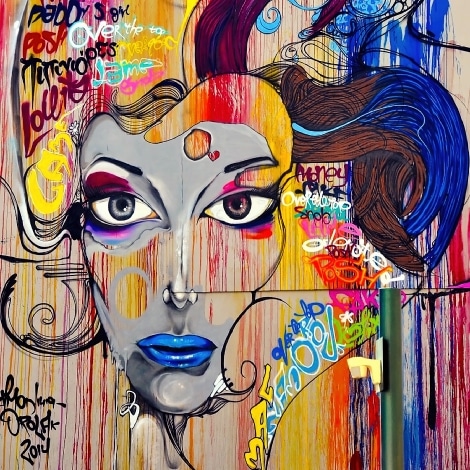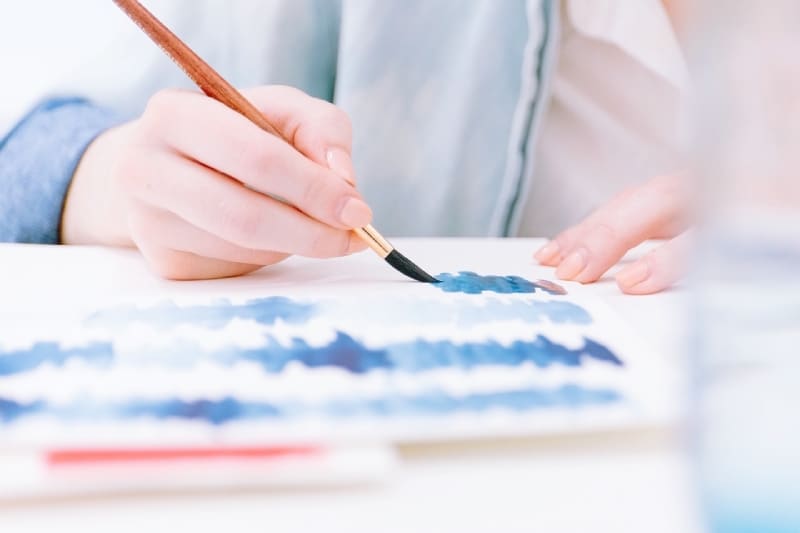Creative people are generally happier and more content than those who aren't. However, psychologist Robert Epstein, PhD. says, "There's not really any evidence that one person is inherently more creative than another." So we have no excuse not to connect to our creativity and tap into that thread of happiness and contentment.
Back in the 1920s, a psychologist Louis Terman, PhD, carried out a study on children to determine if creativity is linked to intelligence. He discovered that intelligence is not necessarily important – what is essential for creativity is the ability to see things from a different perspective – the ‘what if’ factor.
This ‘what if’ factor is responsible for all new inventions and original art, writing and the development of mankind in general.

Cultivate the ‘What If?’ Factor to Connect to Your Creativity
Transforming a mundane task into a creative experience is deeply satisfying. Not only that, one act of creativity leads to another. By approaching a task with a ‘what if?’ mentality fires up your neurons so that boredom becomes engagement, resignation becomes eagerness and at the end you feel accomplishment.
Even if your idea is not workable, it may lead to another more suitable solution. In any event you learned something.
I’m Not the Creative Type
You may not think you are creative in any way but we know different. Try one (or more) of our 9 Small Habits to Get Creative for some ideas how to get started.
Creativity Makes You Feel Better
A study by researchers at Brooklyn and Boston colleges showed that children who were coaxed into feeling negative felt much happier after drawing pictures of whatever made them feel bad. So making yourself do something creative, even if it’s the last thing you want to do, will have a beneficial effect on your mood and happiness level.
Creativity Increases Empathy
An interesting survey carried out by Boston College on teens involved in extra-curricular acting classes found that they suppressed their feelings far less than those not taking part. The major area of emotional expression was that of empathy. In other words, those teens were far more able to discern and verbalize the feelings of others when involved in a regular creative activity.
The Benefits of Creativity
Creativity makes you happy, and feeling happy causes you to be more creative, so there’s no reason not to get creative as often as possible. 45 minutes of creativity can significantly lower cortisone (the stress hormone) levels. Regular creativity sessions, and the subsequent lowering of cortisone to normal levels will improve health by repairing the immune system.
How to Cultivate a Creative Mindset
Robert Epstein recommends a four-pronged approach to boosting your creative mindset:
1. Capture new ideas. Always have a notebook or make use of your cell phone’s voice recorder to note any new idea about anything that occurs to you. It might be a new invention, or a unique twist on an old recipe. It could even be a way to deal with a relationship or financial problem.
2. Challenge yourself by setting an unsolvable problem, such as how to make your house clean itself, will fire off neurons that make new brain connections. This leads to an expansion of your problem-solving skills.
3. Broaden your knowledge. Read up on a subject that you would normally never consider. Watch YouTube videos on motor vehicle maintenance or complicated hair braiding or anything else that you’ve never attempted before. Then have a go yourself.
4. Surround yourself with interesting people. People who have a different outlook to most of your friends and family. Go to a political meeting, or a wine-tasting, or an art exhibition. Make sure you interact with at least four different people. Tell them you have no experience of this sort of thing – people tend to be kind to newbies and take the time to explain things.
Dream Creatively
Connect to your creativity by writing down a problem that requires a solution right before bedtime. An experiment carried out by Deirdre Barret PhD. at Harvard, had some astonishing results. Half the students taking part reported dreaming about the problem, and a quarter discovered solutions in their dreams.
Collaborative Creativity
Working with others on a creative project can produce outstanding results. Sharing ideas seems to boost the whole group, causing individuals to feel validated and valued. Additionally, people leave the session with elevated moods, a feeling of optimism and a sense of increased creativity that permeates their lives.
Consider Your Creative Environment
Washington State University professor of interior design Janetta Mitchell McCoy, PhD suggests that creativity is boosted by your surroundings (2002 Creativity Research Journal (Vol. 14, No. 3.4)) . She recommends plenty of sunlight and the use of natural materials in a creative environment. We would also suggest that making and displaying items in your creative space causes more creativity – making your own inspiration wall is a great idea.
Release Limiting Beliefs
Often people suffer from unfounded beliefs – they don’t think they are creative and they fear that anything they do try will be bad, or wrong, or just not good enough. The truth is that these beliefs are self-defeating and negative. You only have to take a look at some successful artists who create with a child-like abandon to realize that there are no rights, wrongs or not-good-enoughs. Let go of expectations and immerse yourself in the process. If you hate the result then throw it away, but don’t let that stop you having another try… and another.

Creative Practice
Here are a few suggestions to get you going:
- Write non-stop for ten minutes. By hand is better than on a keyboard. Write anything – complete nonsense is fine. Don’t stop until the timer goes off.
- Cut out 10 images from a magazine and glue them onto paper in a pleasing arrangement. Add cut out text if you like.
- Grab some crayons and draw a flower. Then write about discovering the flower as you wander through an imaginary garden.
- Take two recipes and find a way to combine them either by ingredients, technique or both.
- Spend 15 minutes devising a new creative system in your home. It might be changing around the contents in your kitchen cupboards or perhaps moving furniture to create a different flow of traffic through a room.
- Go for a walk and take some photos of interesting textures – tree bark, walls, the ground, a close-up leaf, a cobweb, anything which catches your attention. Go home and either draw it, write about it or create a photo montage.
- Join a group or course, either on line or in real life. Writing, acting, painting, knitting, needlework, cooking – anything that takes your fancy. Participate in the class forums, share your progress, ask questions and be involved.
Go do some creating!
Images courtesy of Pixabay


